With 148 visibility points on Google UK you’re the 46th most-visible domain in the entire United Kingdom. Patient.co.uk had exactly that position. It was the most-visible private health-related domain of all. In short, successful. In June 2015 the company made the decision to move to the less geo-focused domain Patient.info. Today, the domain has only 4 visibility points. Put simply, it’s fallen off a cliff and is slowly sinking to the bottom.
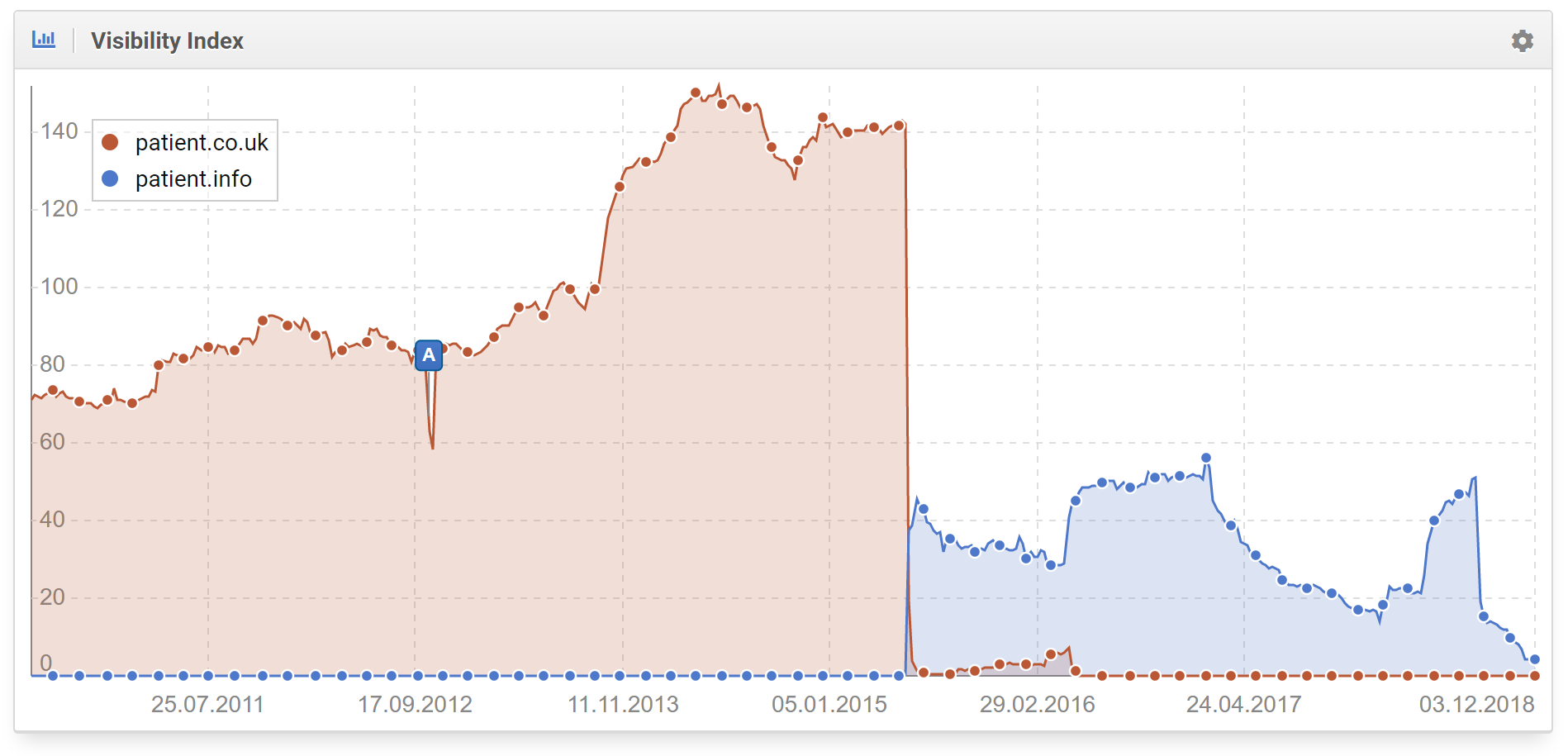
Before the domain move, Patient.co.uk, run by a subsidiary of EMIS Health, had built a domain where 37% of all the ranking keywords (see chart below) appeared on Google’s first page results. It’s exemplary, and it proves they didn’t have any Google search quality issues.
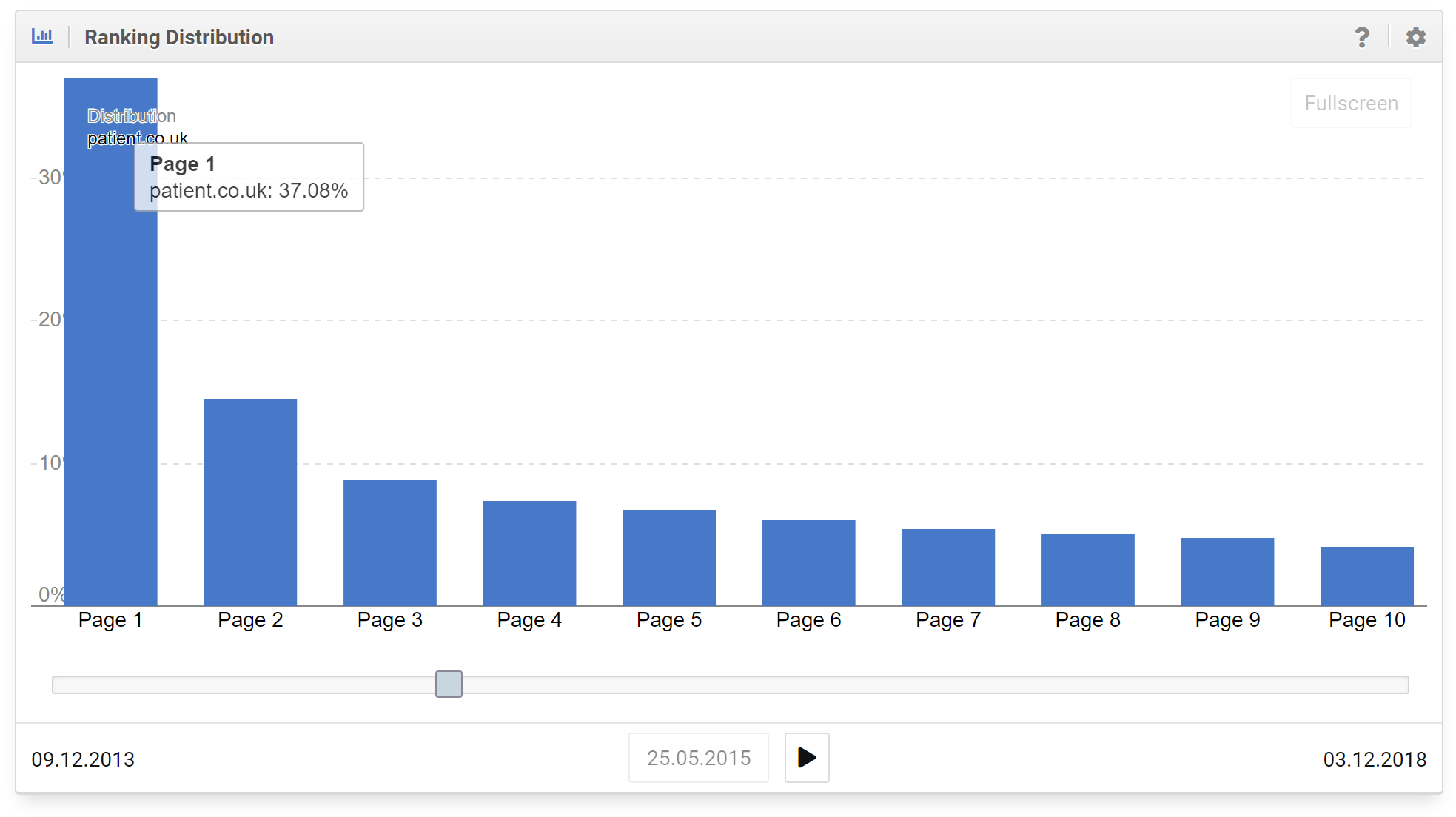
After the domain move, and for the following 2 years, the ranking distribution looked like this.
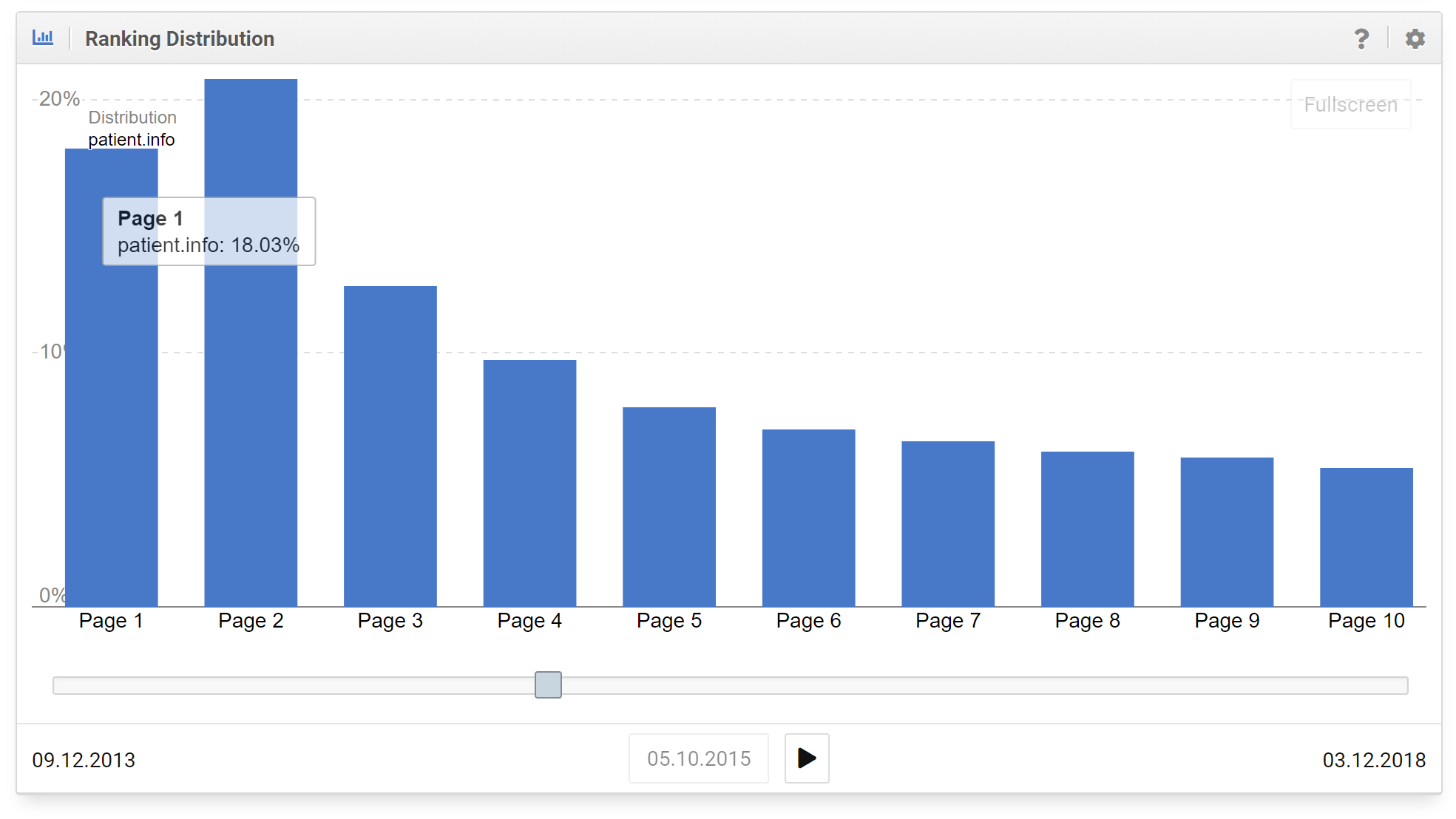
Only 18% of their content (and under 50% of the original page 1 rankings in absolute terms) was ranking on Google’s first page of results, with the majority of the content ranking far beyond the 1st and 2nd page. This new situation points to a quality problem, Google cannot trust the new domain.
So what happened?
Point 1: Brand changes. Google is not Skynet!
The problem was not the move itself. It was technically perfect and was implemented in Google search results rather quickly. The problem was Patient’s capability to understand what was happening after the domain move, as we reported in 2015.
At that time, Patient commented in our blog post: “The move was made for strategic reasons to address our increasingly global audience and move to a top level international domain, which will let us further evolve our services.”
And exactly that, was the main problem.
The UK users never accepted and trusted an .info top-level domain as a brand, which had been “Patient.co.uk” since 1996,
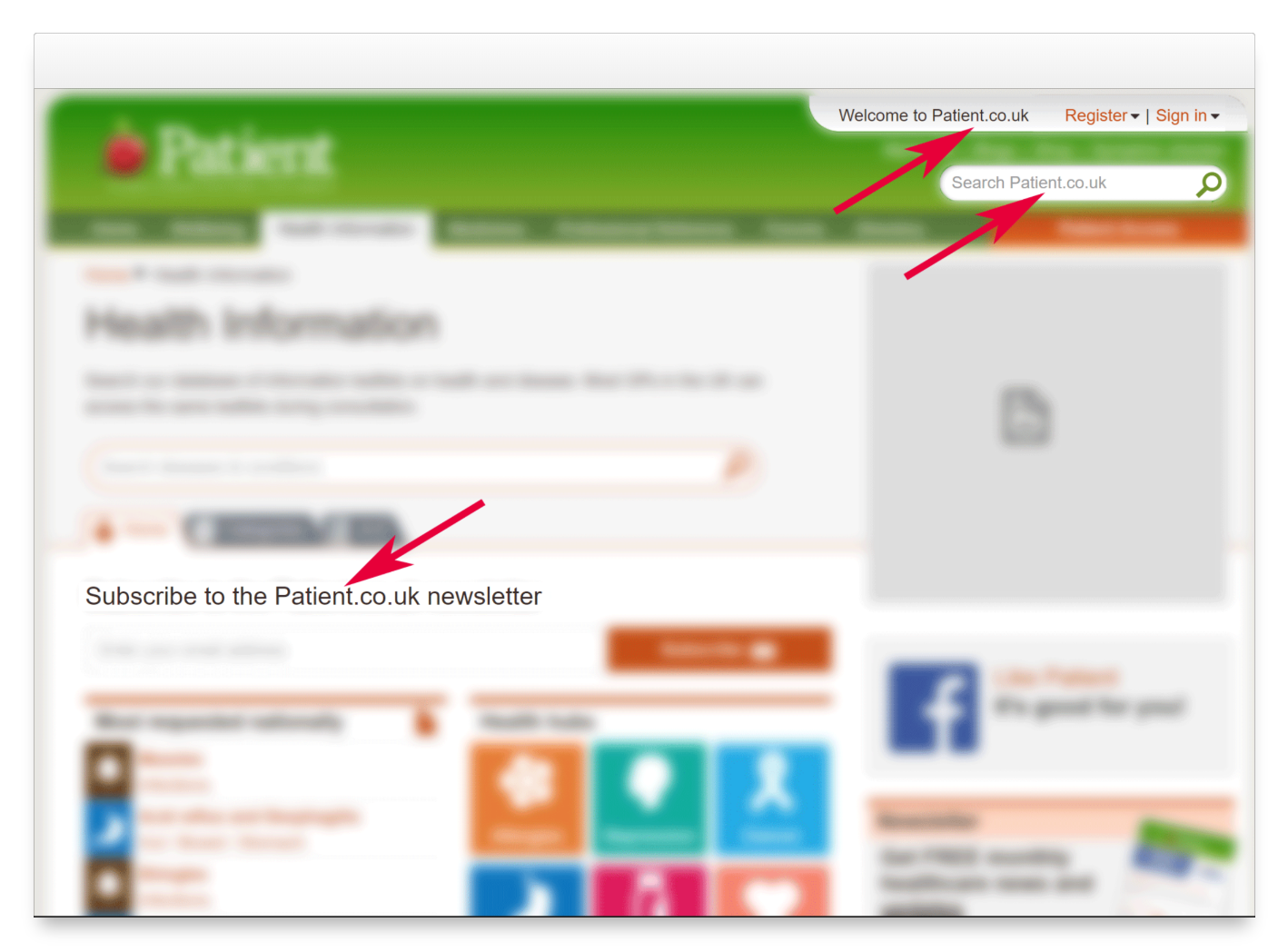
Despite the domain move, Google Suggest was showing “patient uk” as the second most-searched term when we typed in “patient”. Note that this predictive search information comes from user-generated data.
Tesco, Walmart, Aldi, Mercadona, Carrefour, Amazon and Google are not Skynet. The majority of their product placement decisions are based on information they collect from consumers. In the case where these companies have little data, they just trust established brands and they try their luck until they get enough data.
With Google Search, everything starts on the search bar and the collected results can be seen in Google Trends. The users’ search behaviour for Patient didn’t change at all after the new domain was implemented. Even the users still consider Patient UK to be the brand name for patient.co.uk and patient.info. What should Google do with those contradictory signals: What the user really wants vs what Google is delivering?
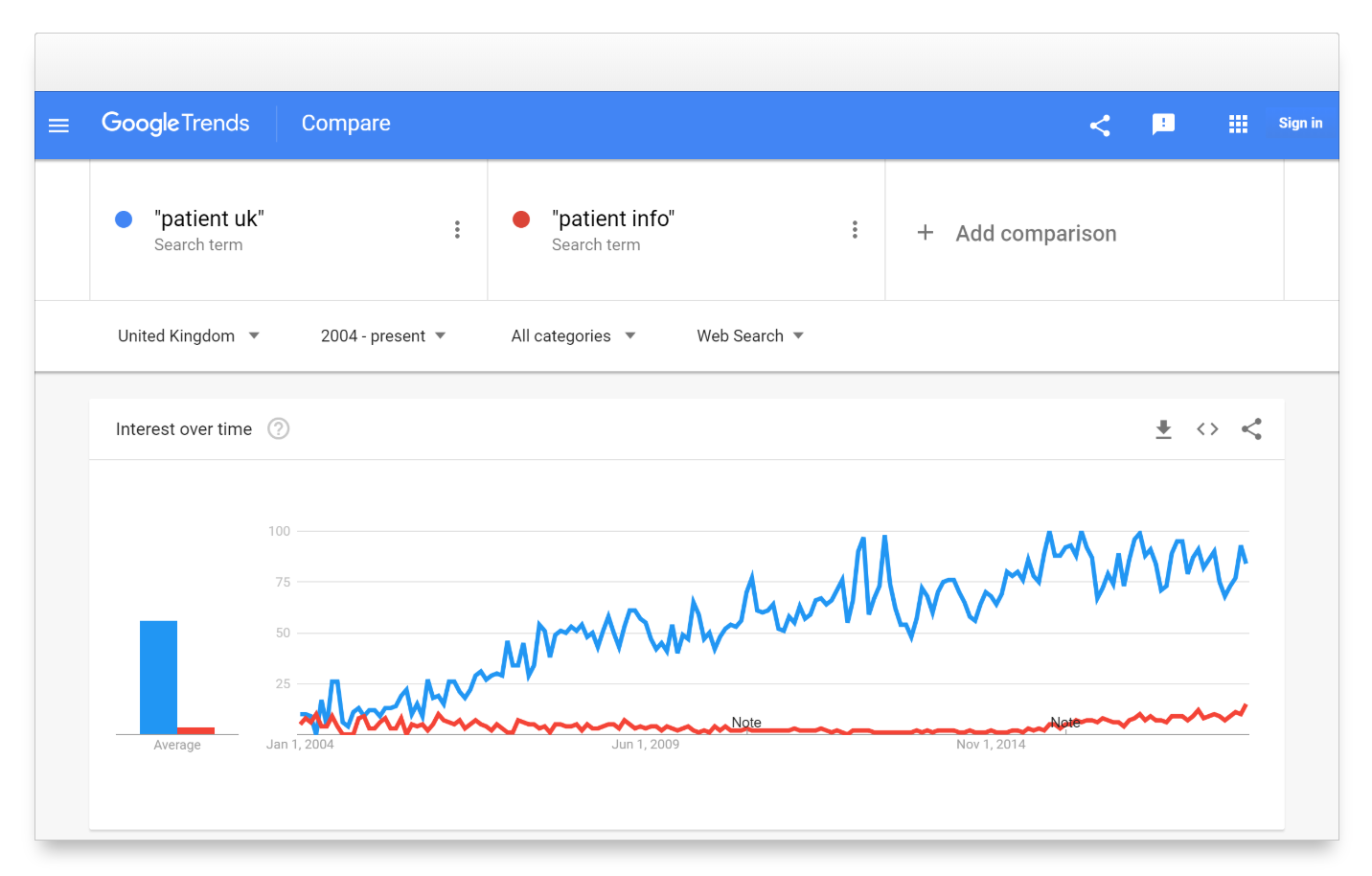
Image you have a YMYL (Your Money, Your Life) website that the users refuse to interact with because they want the original one and they are still actively looking for the old domain. Such a re-branding always needs to be announced, well-distributed and understood, in advance!
I’m not going to dig deeper into this matter but try to find out by yourself, why a well-known brand like Dunkin Donuts spend a lot of money to make people aware that the new brand is just “Dunkin”:
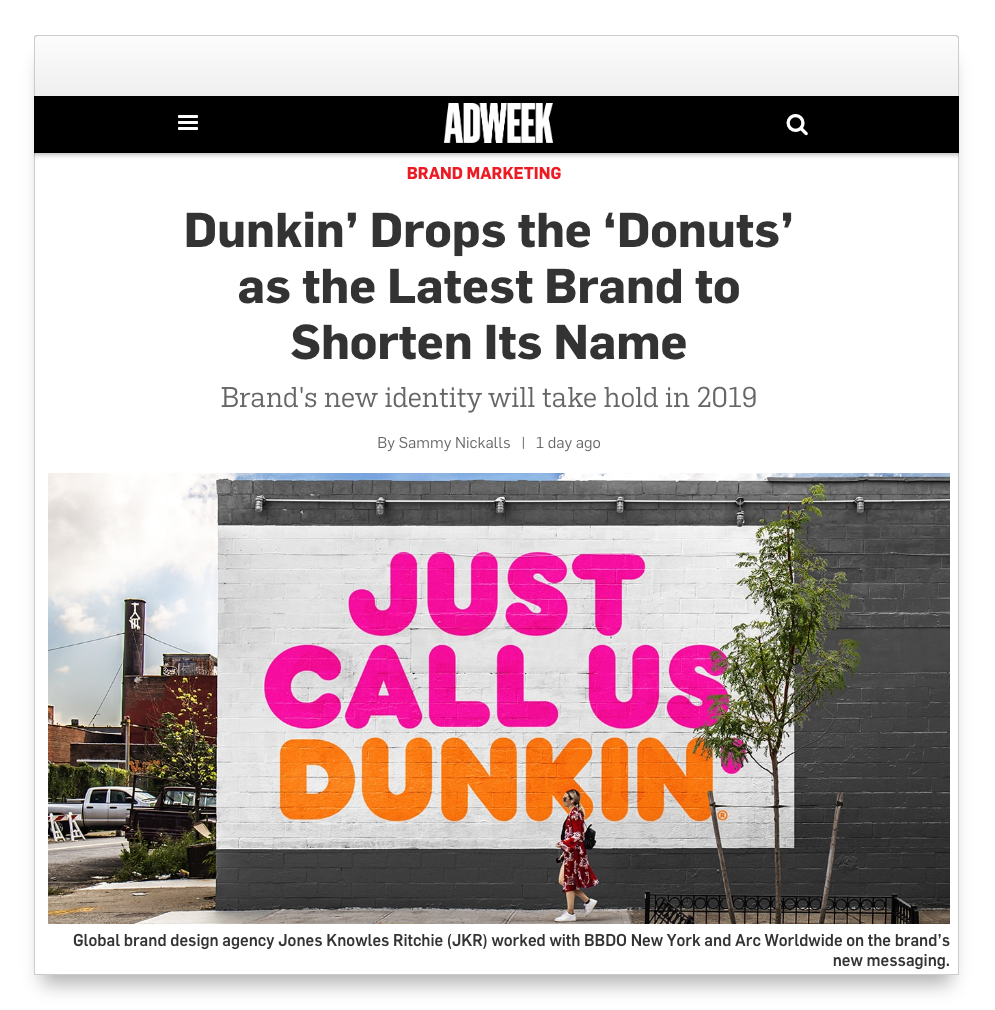
Why should this be any different on Google? The mistake we see with ‘Patient UK’ is what happens when you are trying to optimize for Google and not for Google’s users.
Point 2: Link building is not the solution for everything
This is not the first time we’ve seen this: When a domain is losing organic visibility from Google and the reasons for the losses are unknown, the first solution for many SEO teams is link-building. “If all you have is a hammer, the only thing you see is nails.”
Patient.info earned more links in 2 and half years than Patient.co.uk did in 20 years.

The majority of the new links use the anchor-text that Patient.info wants to rank for. For the anchor text “anxiety”, for example, domains hosted by nhs.uk, are linking to Patient.info: Example 1 and Example 2. Take a look at some of the very targeted link texts in the table below.
The question is, if we are able to see this much information, how much more can Google see? And how much more knowledge has Google gathered about how natural links develop? Does this vast network of targeted links look natural?
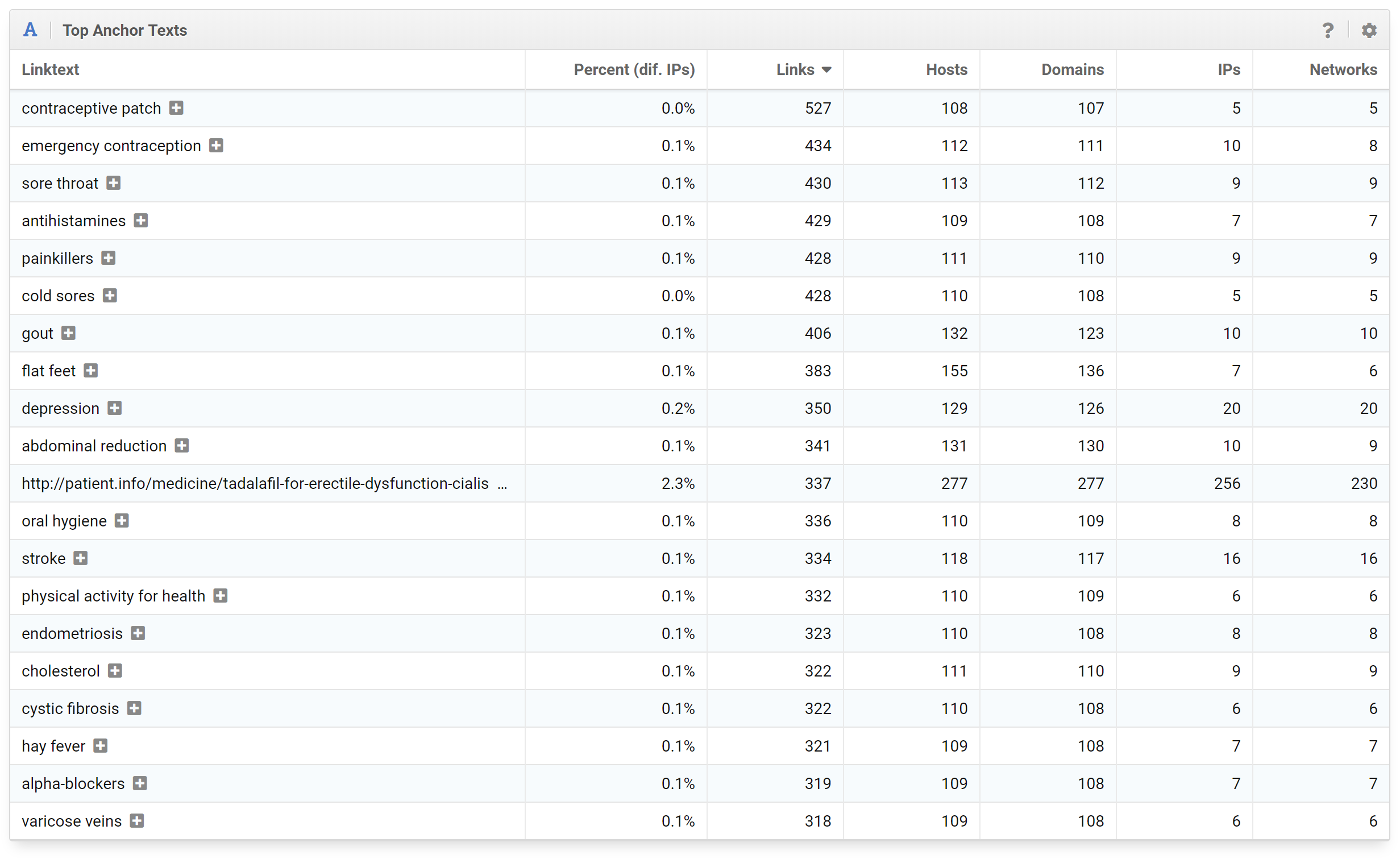
If you are still somewhat sceptical, take a look at the following. The sharp drop in the graph shows the number of links dropping from 300K to 154K in the summer of 2018 – for whatever reason:
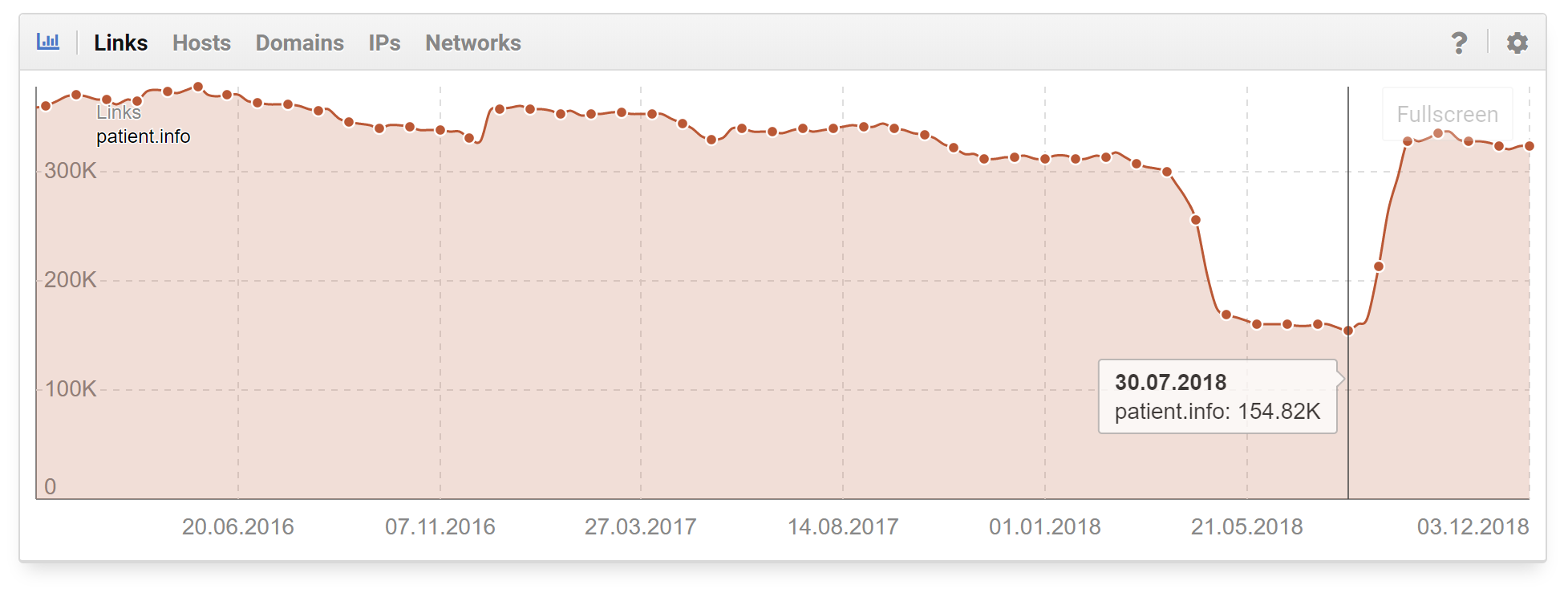
In the same period of time the visibility on Google doubled from 25 points to 50 points (Google started trusting the domain again). As soon as the number of (unnatural) links increased again, the visibility dropped:
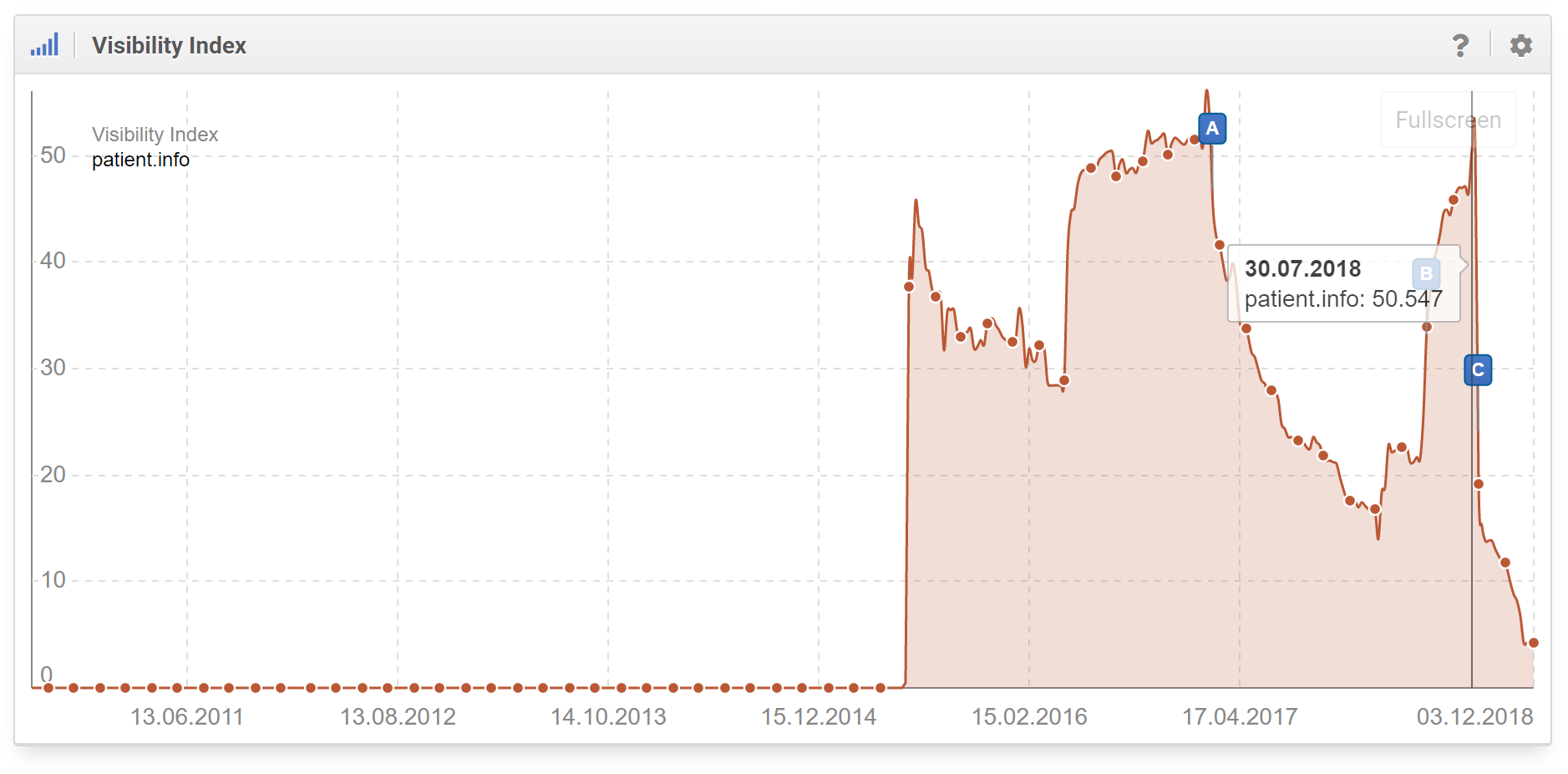
Two weeks ago, we reported about a similar case in our Italian blog where a PBN was used to build links. The domain is now back on Google but at the time of writing the article, the domain had lost nearly all visibility. https://www.sistrix.it/blog/i-link-e-il-medic-update-il-caso-di-farmacoecura-it/
Point 3: Final Thoughts
This year, I visited different SEO conferences in different European countries where different speakers recommended working only with Google Search Console data. If you follow this advice you are going to make a lot of big mistakes in your carrier as SEO. Google Search Console data can always look good, even while you are vanishing from Google!
If you have ever run a business, GSC data is like your accountant’s data. This data is vitally important for your business but it does not show you how good you really are, how big you are in your market, who your competitors are, how many growth opportunities you are missing and it only shows you data on what you sell and not what you should be selling.
Patient.co.uk was the top-dog, with no other private British website having greater authority in the UK market. Even in the USA Patient.co.uk was on the right track, and it was really close to their next competitor, Healthline.com:
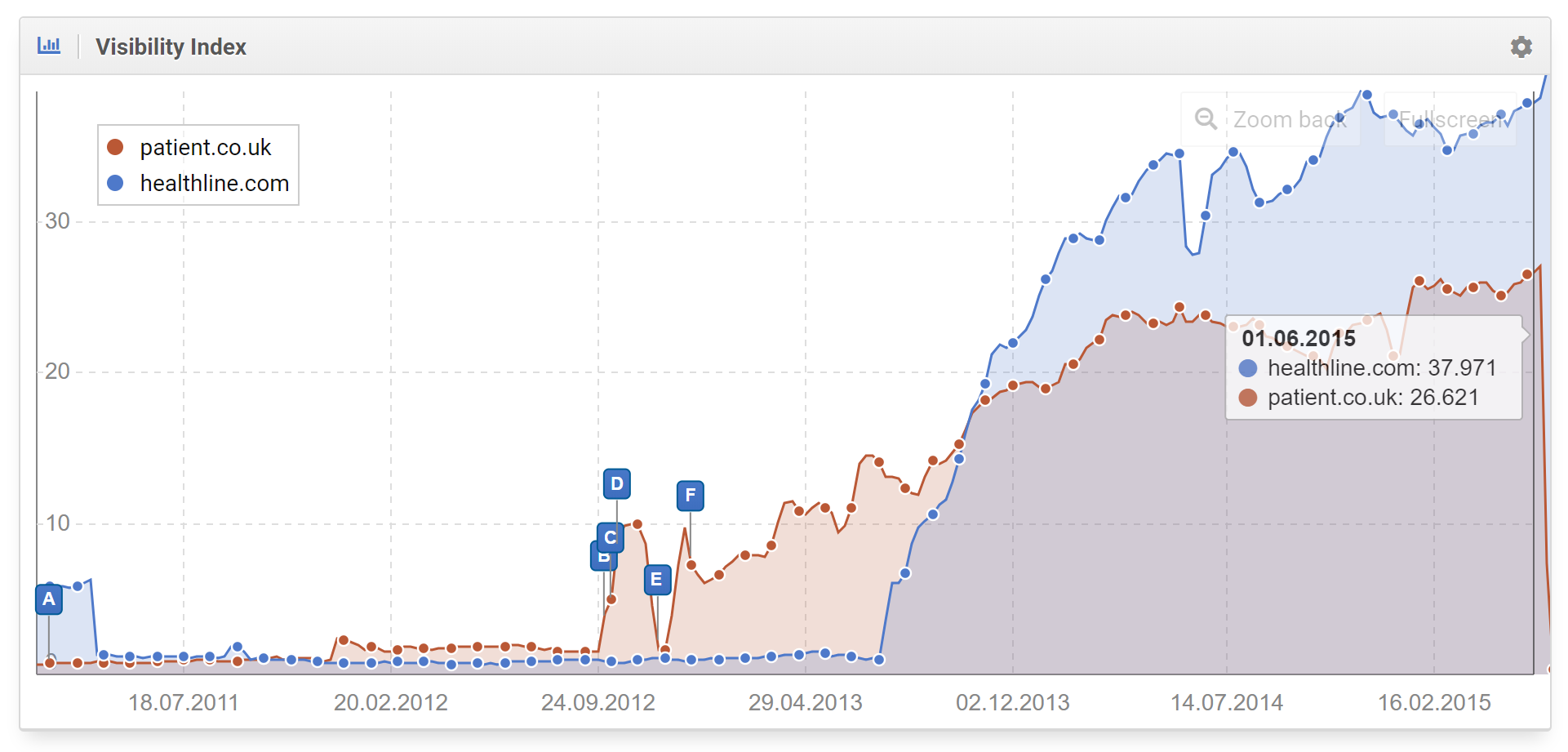
There was no conceivable reason why they should have changed the domain name. Instead they should have kept increasing the quality of their content even more (we now know they had a very good ranking distribution). Today, they lost in both countries the US and in the UK and in addition to that, Healthline.com replaced Patient completely in the UK:
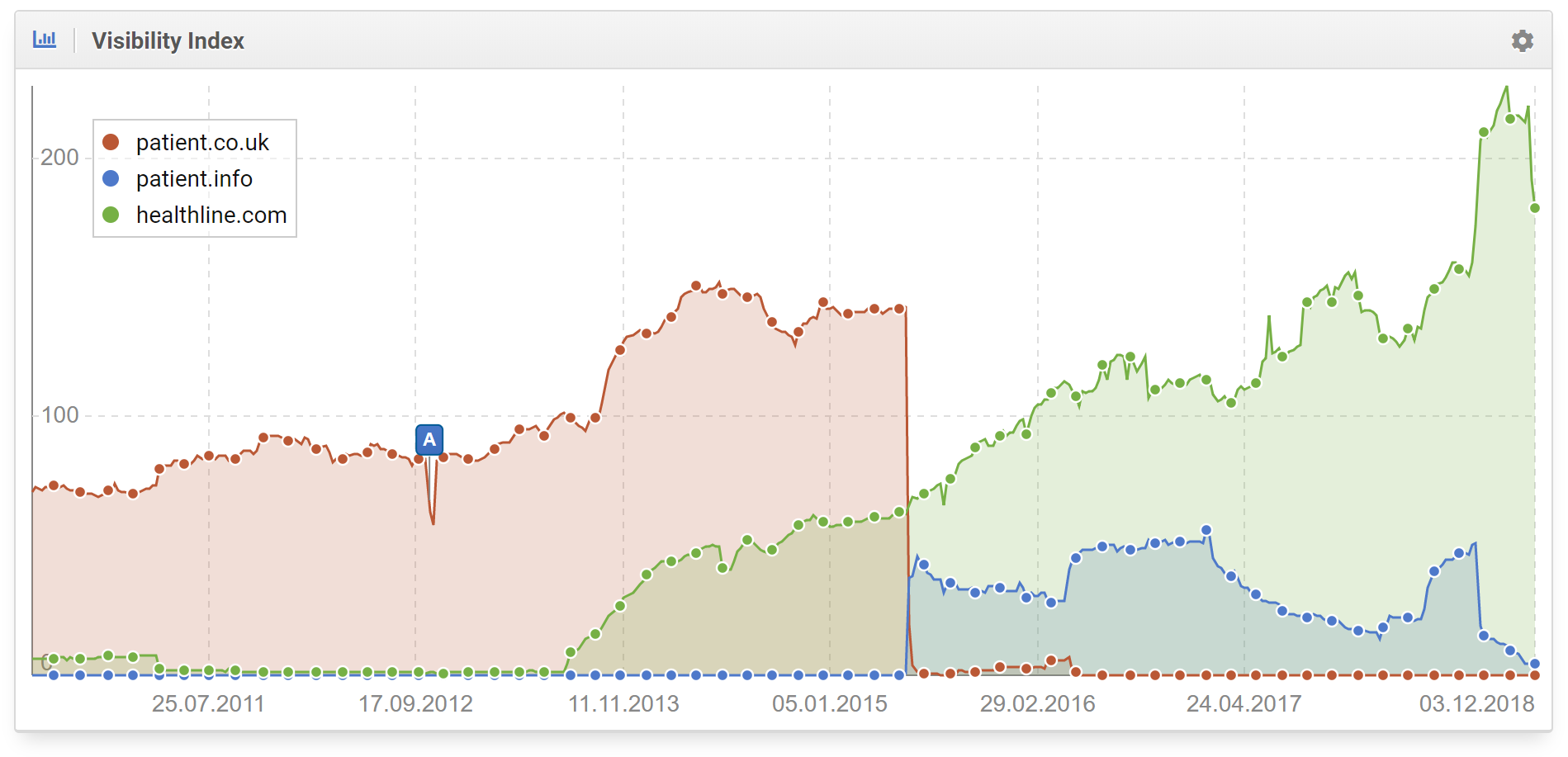
Would a link disavow file help? Could a roll-back to Patient.co.uk save the domain?
The only reason I wrote this article is because we should not forget that behind big domains are hundreds of real people trying hard, and they try hard because the want to keep their jobs.To suggest that this fall in visibility could result in job losses is somewhat harsh, especially this close to Christmas, but I would like to give them hope.
As Carl Sagan said at the Royal Institution Christmas Lectures in London, 1977: “You have to know the past to understand the present.” Now, is the moment for Patient.info to understand the present.
We hope you like the article.
